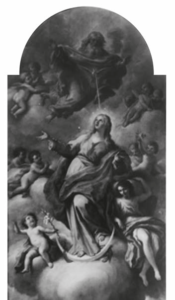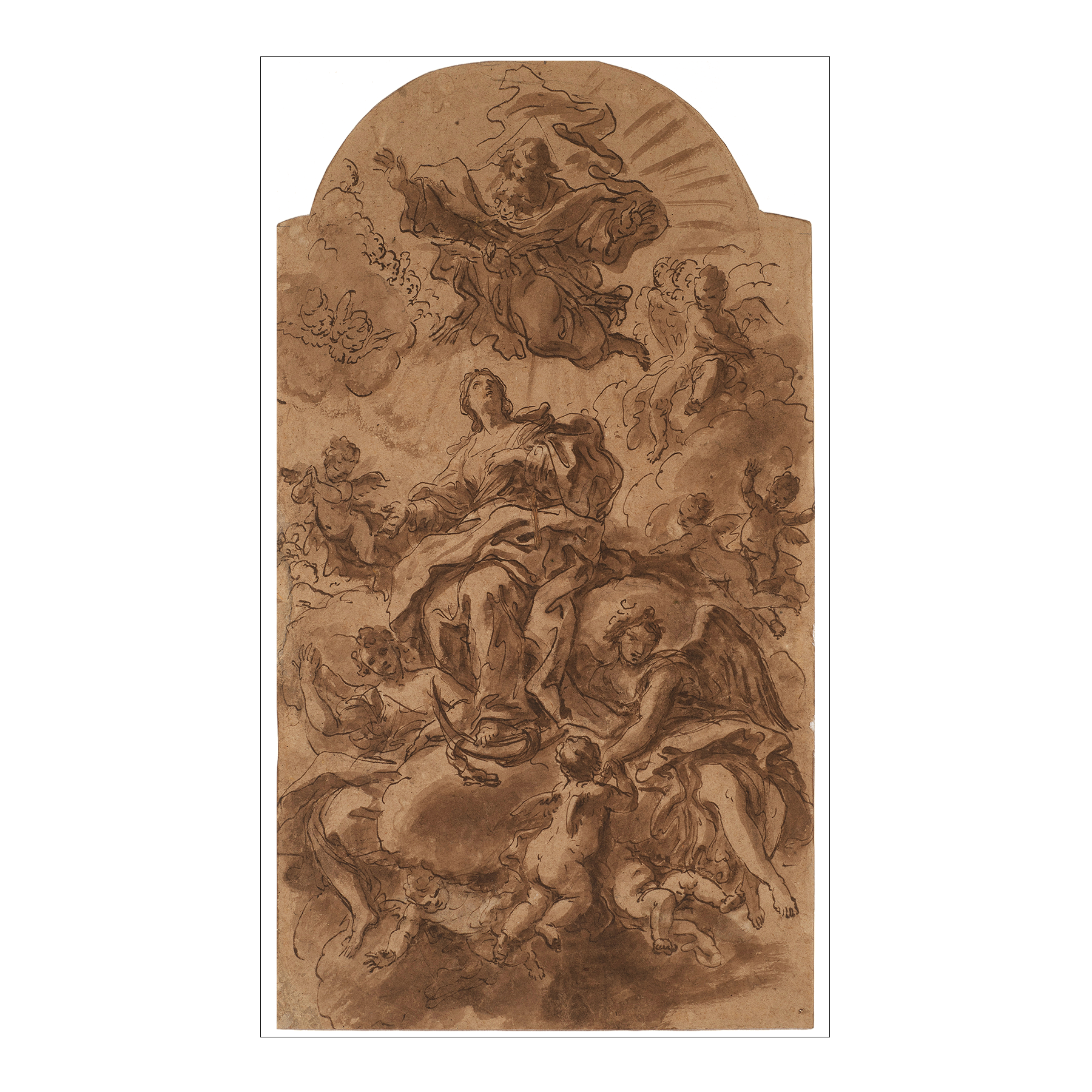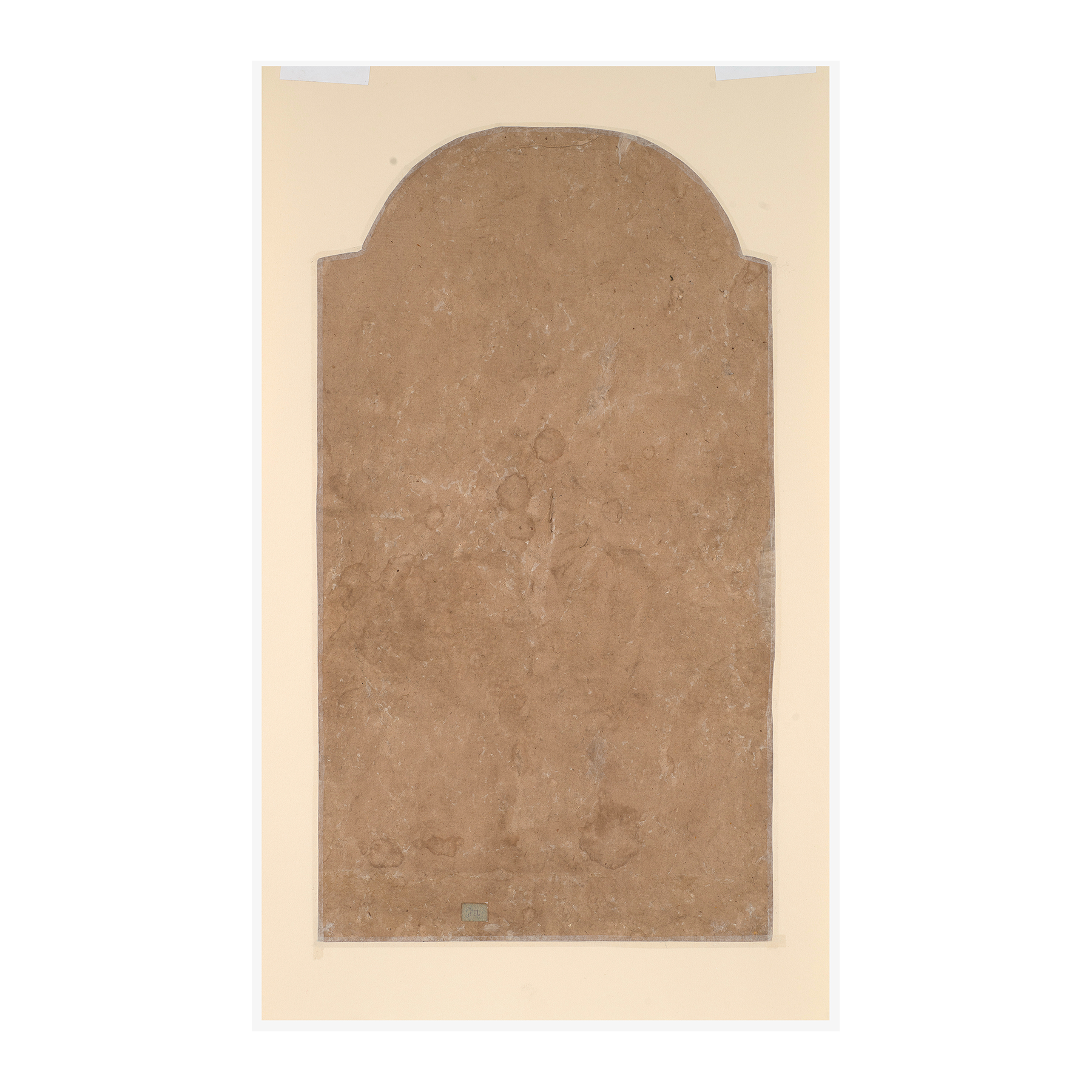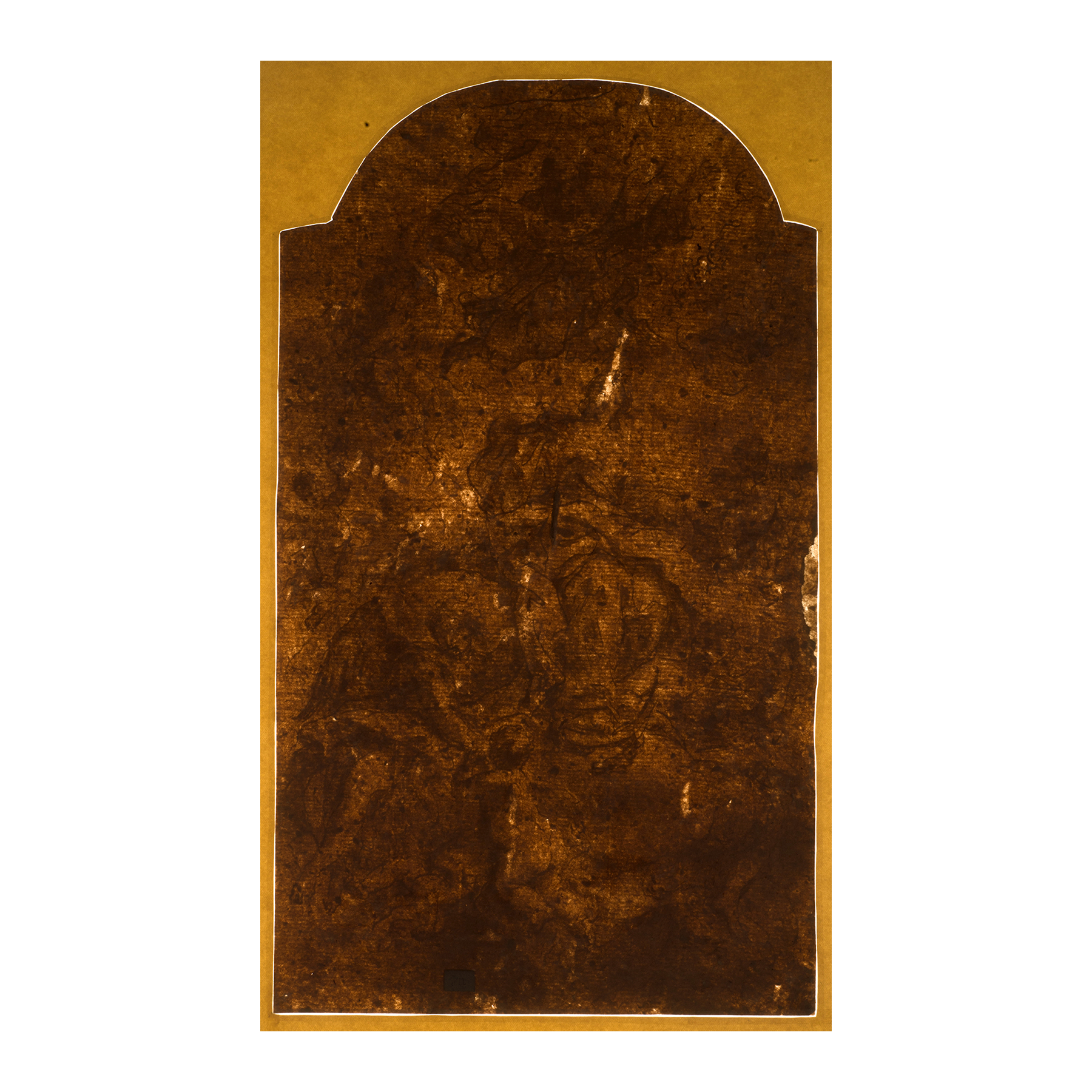Paolo de Matteis
Piano del Cilento, Salerne 1662 – Naples 1728
The Immaculate Conception
Pen and brown ink, brown wash, rounded at the top.
418 x 230 mm – 16 7/16 x 9 1/16 in.
Provenance – Robert Low, London (L. 2222)

An example of a study for a religious composition, this sheet is typical of the style of Paolo De Matteis and can be related to two paintings of the same subject created for Neapolitan churches. One conceived in 1722 for the church of San Francesco degli Scarioni and on deposit at San Lorenzo, the other c. 1726 for the church of the Conception at Chiatamone, these two illustrations of the Immaculate Conception are close and repeat elements of
our drawing: a vertical composition, with the figure of God the Father at the top, the Virgin in the centre standing on a crescent of the Moon, stamping on the snake, surrounded by cherubim and supported by one or two angels. The angel on the right is here sitting, legs crossed in a position that can be found to a greater or lesser extent in both paintings. The one on the left supports the clouds with its left hand. In the paintings, Matteis reuses these different positions by organizing them differently: in the one of 1722, the right hand angel combines the two positions since, crossing its legs, it also supports the clouds while in the one of 1726, it is the left hand angel which in reverse, crosses its legs.
Matteis has also used this theme, inserting it in larger compositions, such as the Exaltation of the Virgin in the Old and New Testaments (Berlin, Gemäldegalerie) of 1716-1717, where he still shows this same way of arranging the figures, repeating this angel with crossed legs on several occasions. The hand is typical and recalls numerous drawings by Matteis and, as in the previous drawing his training with Giordano is still evident. Following the example of his former master, he uses outlines in pen and brown ink, to which the wash gives all its force and dimensionality. The graphic style is perfectly comparable to the Charity of Saint Vincent de Paul, for example a drawing in the same technique in the museum of Darmstadt, published by Walter Vitzthum,1 then by Erich Schleier,2 who connects it to the painting of the same subject, which in the meantime reappeared at the Heim gallery. Yet again, we find this same angel, almost a commonplace for Matteis. The piece of wood at the centre of the sheet should be mentioned, taken up in the fibres of the paper, it is an original trace of the handcrafted paper.
1. Walter Vitzthum and Catherine Monbeig Goguel, Le Dessin à Naples du XVIe au XVIIIe siècle, XXXIXe exposition du Cabinet des dessins, Paris, musée du Louvre, 1967, cited p. 30.
2. Erich Schleier, “Opere di Paolo de Matteis in Germania”, Scritti in onore di Raffaello Causa, ESI Napoli, 1988, p. 310, reproduced.








